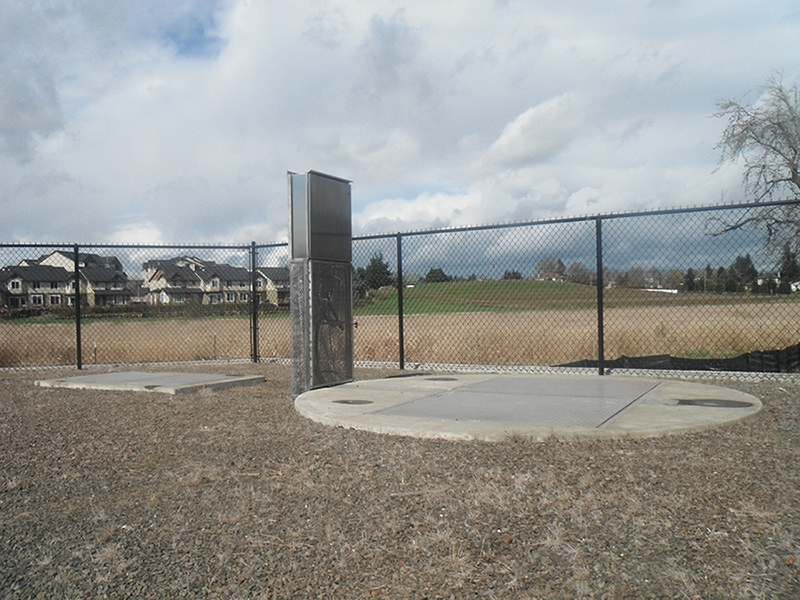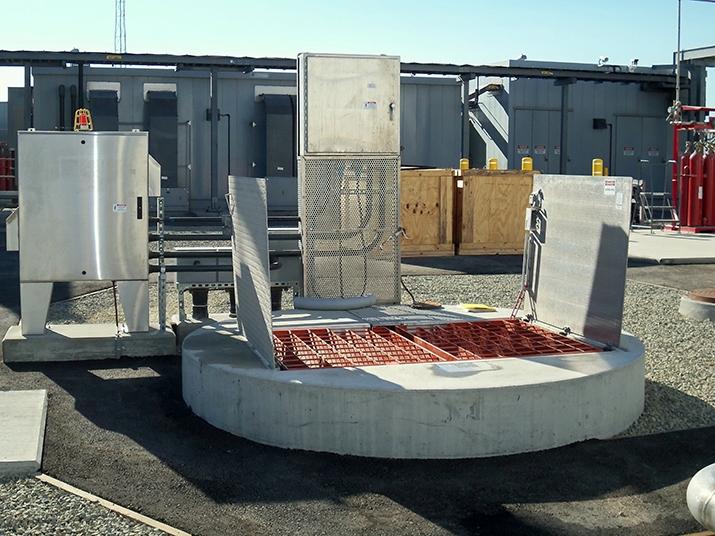
Romtec Utilities designs pump and lift stations that are functional, reliable, and safe to own and operate. Last week, our blog discussed the importance of using reliable fall protection in wet well hatches, an important design feature. Another significant safety concern located near the wet well is the disconnect panel and electrical junctions. Romtec Utilities offers componentry and expert electrical engineering to provide safe operation and maintenance on the electrical system of pump and lift stations. Electrical disconnects include an interesting safety consideration.
The disconnects that are at the center of this blog are the junctions where pump cables connect to a disconnect stand. These disconnects are particularly significant in terms of safety because submersible pump and lift station applications have an exception from the National Electric Code (NEC) standards specifying disconnect locations. Typically, electrical disconnects must be located within “line-of-sight” of the motors. In submersible pumping applications, the disconnect would then have to be located inside the wet well to follow this regulation. As this would create a bigger safety hazard, there is an exception for submersible motors.

The next big discussion is the disconnect stand. These devices are used when a control panel is located away from the wet well so that the pump cables cannot reach the panel. They are also used to comply with classified space requirements. Wet well vents and hatches can be a source of potentially flammable and/or combustible gasses. Classified space requirements prevent electrical junctions and disconnects from being located in these spaces. Disconnect panels move the electrical components outside of the classified spaces.
The base level of safety and code compliance for disconnects uses a cable gland filled with epoxy that is “hardwired” to the disconnect stand. This is a perfectly reasonable method, but there are several drawbacks. The first drawback is that any time pump maintenance is required, a certified electrician for your jurisdiction is also required. Additionally, the electrician must comply with NFPA 70E which requires personal protective equipment (PPE), voltage testing, flash hazard analysis, and flash protection boundaries. The second drawback is that the electrical connection must be completely severed to perform maintenance and then completely reinstalled to resume pump or lift station operation. With a gland that is filled with epoxy and hardwired to the disconnect stand, this is the procedure that would be required every time pump maintenance is required.
Romtec Utilities designs systems to meet our customer’s or their engineering firm’s requirements, but often times the end owner of the pumping system does not know all the options. Romtec Utilities can include components such as the Meltric Decontactor. This device costs more to supply, but it vastly improves safety when handling disconnects and requires substantially less time for pump maintenance. The Decontactor includes self-contained plug contacts that resist arcing and includes a dead-front that restricts access to live contacts. Spring loading ensures the plug disconnects independent of the operator and guarantees load breaking, and the “switch rating” of the device allows it to be operated safely under full load.

When using a component like the Meltric Decontactor as the pump cable disconnect, the requirements to use a certified electrician and to comply with NFPA 70E are not applicable. This device provides all of the safety protocol these regulations enforce. In addition to the safety benefits, this type of disconnect can be un-plugged and plugged-in in a matter of seconds. This eliminates the need to disconnect and re-make gland and epoxy connections, which saves a significant amount of time during pump maintenance.
Romtec Utilities can include a wide-variety of safe electrical designs for all types of pump and lift stations. When following the NFPA standards, operating electrical disconnects is reliably safe. It is, however, important for pumping system owners and operators to be aware of different options for making and operating disconnects. The Decontactor is one of the safest and most reliable options for pump cable disconnects, and understanding the availability and benefits of these components can help you get the best pump or lift station available.
